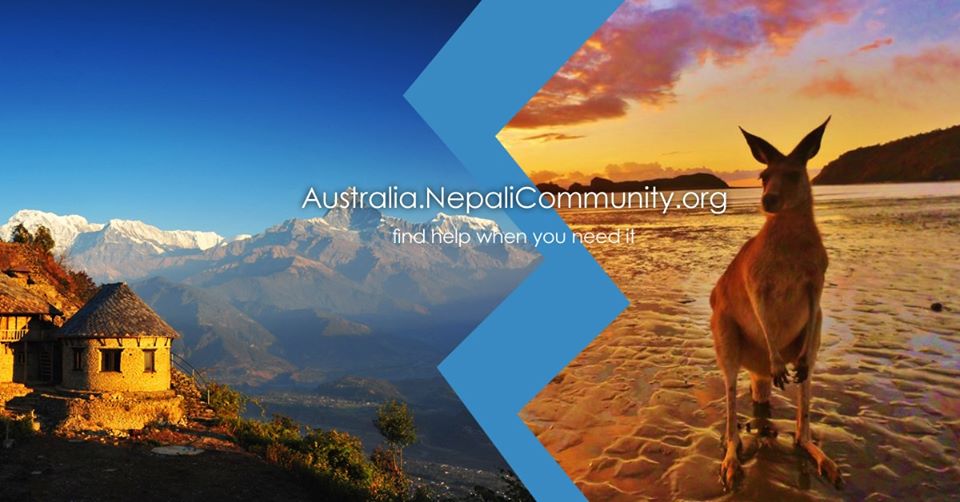One Belt, One Road Fuels Nepal’s Dreams
Jul 19, 2017 under Interesting 143 , National 834 , Business/Economy 516

“Good morning, sir,” the Nepal Armed Police Force officer stamped his boot on the ground while keeping his right hand at his forehead. The Chinese police officer sitting inside a large building on the Bank of Kerung Khola in Rasuwagadhi – the only active gateway from Tibet to Nepal had no response.
“I want to take my friend inside for a tour, sir,” the Nepali officer said.
Soon a very young looking Chinese police officer came out of the room and asked for something. The Nepali officer thought he was asking for my cap.
“No no, no, no.” The Chinese officer repeated a word, “Lagaleeta, Lagaleeta, Lagaleeta.” He was asking for my citizenship card, which is called ‘Nagarikta’ in Nepali.
As I handed over my citizenship card, he said, “No, no, no, no, English, English”. The citizenship card was in Nepali, so he asked for my driving licence, which worked. He took my picture on his mobile and said the doors would be closed in ten minutes for lunch, so we had to be back before that. We had only nine minutes to spend in Tibet.
There were around a dozen shops and a few restaurants behind the immigration building. ‘No pictures’ signboards hung everywhere. Inside the building, automatic gates, immigration counters with full-fledged digital system were in place, but without immigration officers or travellers.
We were two minutes late and the doors were closed when we returned. The Nepali officer became nervous, went to the same room where he had received no response earlier, and was scolded this time around. But at least the gate was opened.
Not everybody gets the opportunity to enter Tibet now. My success was the result of the friendship I developed with Nepali security officers over a half-hour chat on the bridge in Rasuwagadhi that connects Nepal and China. “Don’t tell them that you are a journalist,” the police officer who accompanied me warned.
This place will be an exit of the Chinese government’s ambitious Belt and Road Initiative, previously called One Belt, One Road (OBOR), and also referred to as the New Silk Road. This particular stretch will connect Nepal with all of South Asia as well as Central Asia via the Qinghai-Tibet rail which is just 500 kilometres away from here in Shigatse. China is working to bring trains to Kerung (known as Kyirong/Gyirong in Chinese) – the nearest town to the Nepal border in Chinese territory, lying 24 kilometres away, by 2020.
Chaos at the Border
No one except truck drivers with citizenship cards from Rasuwa district – which is on the Nepal-China border – are allowed to enter Chinese territory through this point. In the past, Nepal’s immigration office used to provide a one-day pass to Nepalis to spend a day in Tibet but this has been halted for the last few months. The only way to enter now is to get a special visa for Tibet from the Chinese Embassy in Kathmandu, which isn’t an easy task for a commoner.
Currently, this is the only available route to enter Tibet from Nepal. After the earthquake in 2015, China decided to close the Kodari route, replacing it with this one, but the infrastructure on the Nepal side is very inadequate.
Hundreds of trucks were queued up waiting for the call to enter Tibet but it was hard to predict when they would be asked to cross the bridge. These trucks travel to Kerung and carry goods from there to Kathmandu – Nepal’s capital.
“It’s hard to work here. They (Chinese) don’t understand our language. Truck drivers on our side pressurise us but we don’t have any say regarding entry. We let them cross the bridge if the Chinese ask us to do so, otherwise we stop them,” said Dhruba Shrestha, an assistant officer with the Nepal Armed Police Force deployed on the border.
Less than 100 metres from Nepal’s small security post, with its zinc roof and sheet fence, Rasuwa Fort lies silent. The fort was built by Junga Bahadur Rana — the former Prime Minister of Nepal who invaded Tibet in 1855. Just next to the Fort, severely damaged by the 2015 earthquake, Nepal’s revenue office has crumbled to pieces.
A group of drivers sat drinking tea in a temporary stall, their faces full of dissatisfaction, anger and worry. “It’s been two weeks and I have been waiting to enter and hoping to get through today, if not tomorrow,” said Rana Prasad Lamichhane, who owns and drives a truck. This has become a regular wait for more than a year.
The local authorities are seriously frustrated by the Nepal government’s lackadaisical attitude to managing the only exit to Tibet. The first word the officers utter is against their own government. One security officer used every curse word in Nepali to express anger against the government’s poor management.
“Look, those Chinese across the border, how well managed they are, we don’t even have a toilet, let alone other facilities,” he said, speaking under the condition of anonymity.
A couple of weeks ago one security officer was seriously injured in the leg after a boulder rolled down from an earthquake-weakened cliff. Remains of the earthquake-induced landslide were clearly visible. “A few dead bodies are still inside these remains, it’s a torture for us to get deployed here,” he added.
- BY
Tagged: OBOR 5, Nepal 601, China 99, Shigatse 2, Rasuwagadhi 2, Gyirong 2, Trade 14, Finance 22, Exports 4, Imports 6


